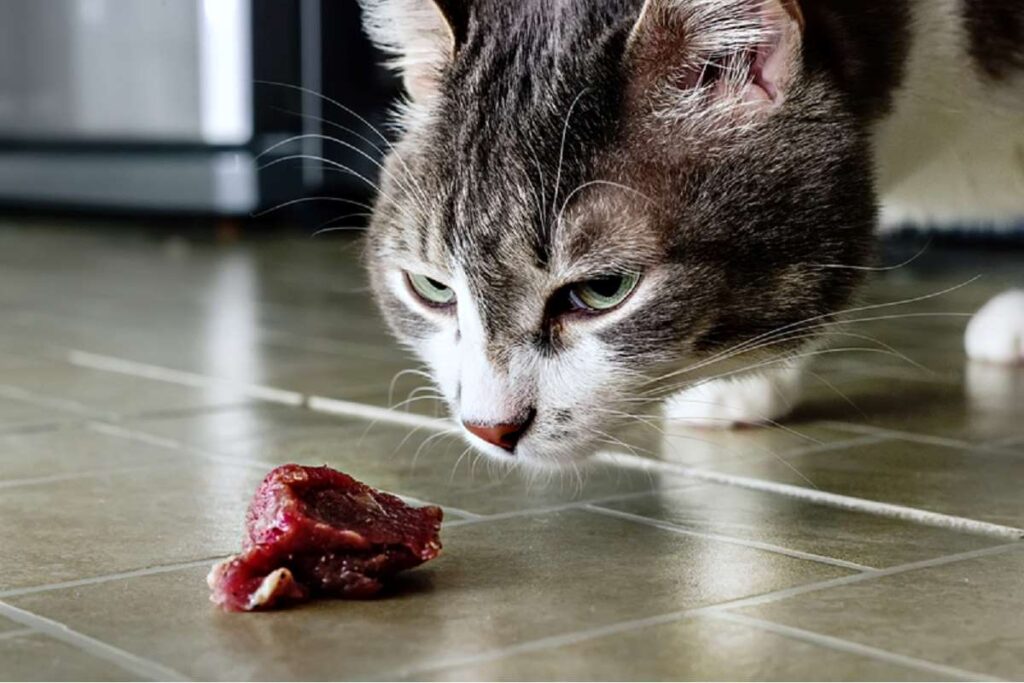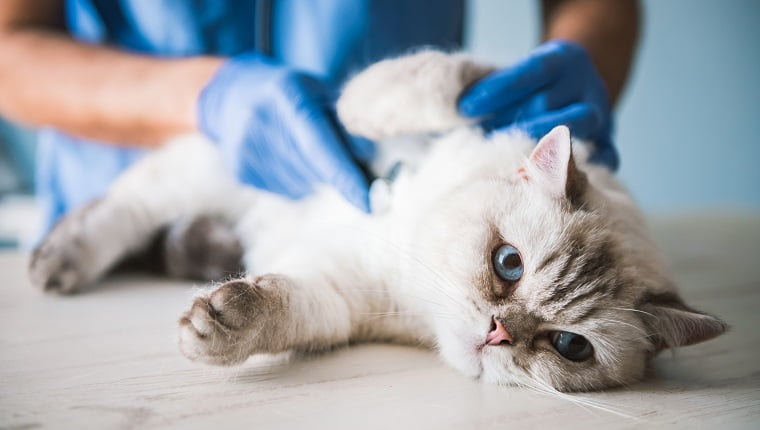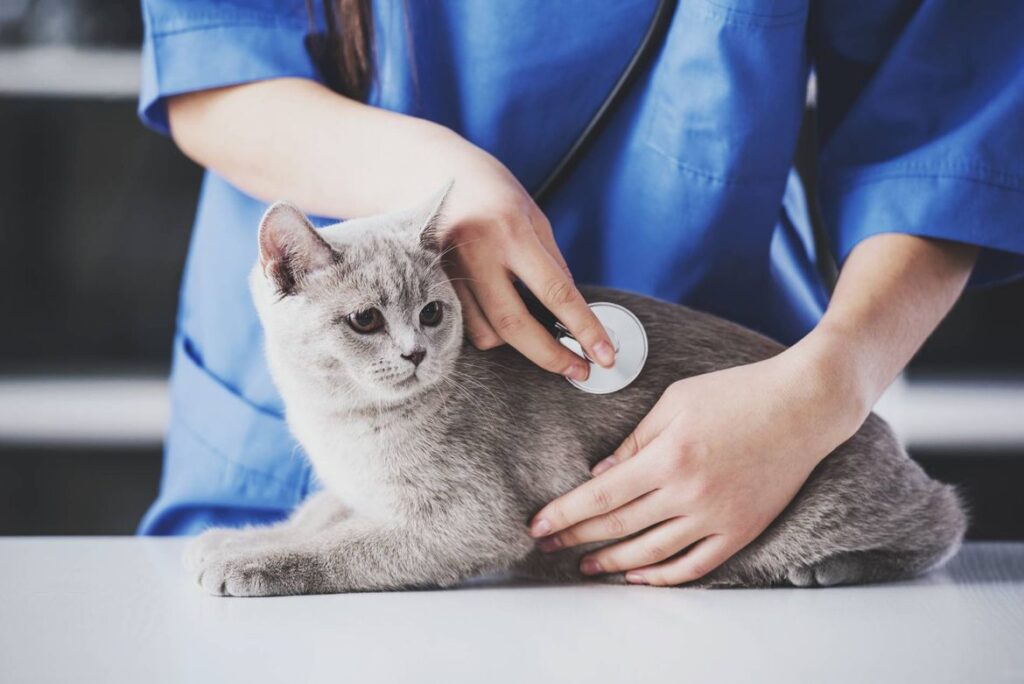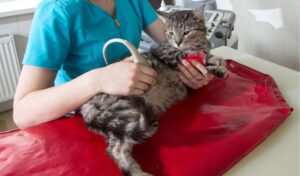How to Prevent Salmonella Infection in Cats

Salmonella is a type of bacteria that can cause serious infections in both humans and animals, including cats. Salmonella infection in cats can lead to gastrointestinal illness, fever, and abdominal pain. As a cat owner, it is important to take steps to protect your pet cat from various health issues, including salmonella infection.
What is Salmonella?
Salmonella infection, also known as salmonellosis, is a bacterial infection that affects cats and is caused by Salmonella bacteria. It can cause serious infections in both humans and animals. It is a gram-negative bacterium that is commonly found in the gastrointestinal tract of animals, including cats.
Salmonella can cause gastrointestinal illness, including diarrhea, vomiting, fever, and abdominal pain. In some cases, it can also cause sepsis and meningitis. In addition to causing gastrointestinal and blood infections in cats, salmonellosis can be transmitted from animals to humans.
How Do Cats Get Salmonella?

Cats can get infected with salmonella through various sources. The most common way is by consuming contaminated food or water, such as raw or undercooked meat, poultry, and eggs. To prevent infection, it is crucial to cook your cat’s food thoroughly to kill any bacteria present.
Another way cats can contract salmonella is by ingesting contaminated feces, which can be found in a litter box. Therefore, cleaning your cat’s litter box regularly and disposing of the feces properly is essential.
Cats can also contract salmonella by coming into contact with contaminated surfaces. For example, if a cat walks on a contaminated surface and licks its paws, it can ingest the bacteria. Therefore, keeping your cat’s environment clean and disinfected is crucial.
Factors that Increase the Risk of Salmonella Infection in Cats
Cats contract salmonellosis through contact with infected animals or contaminated feces and food. Kittens and elderly cats, and those with a weakened immune system, are more susceptible to salmonella infection and may experience more severe symptoms. Cats on antibiotic therapy are also at an increased risk since antibiotics can destroy the good bacteria in the digestive tract, leaving them more vulnerable to infection.
If you suspect your cat has a Salmonella infection, it is important to have it diagnosed and to take care of cleaning the litter box, food and water bowls. Wearing gloves when doing these tasks can prevent contracting the bacterial infection yourself.
Diagnosing Salmonella Infection in Cats
To determine if a cat has salmonellosis or another underlying condition causing similar symptoms, a veterinarian may conduct stool and urine tests, as well as blood work. Salmonella infection can be confirmed by examining a cat for various physical and pathological findings such as:
- Low blood platelet levels
- Anemia
- Abnormal white blood cell count,
- Electrolyte imbalance
- Low albumin.
Diagnostic procedures help to rule out other conditions that can result in similar symptoms, such as parasites, dietary-induced stress, drug or toxin-induced stresses, viral or bacterial gastroenteritis caused by E. Coli or other common bacteria.
In cats infected with Salmonella, symptoms such as diarrhea, vomiting, fever, abdominal pain, loss of appetite, dehydration, and lethargy may occur. If you observe any of these symptoms in your cat, it is crucial to take them to the vet immediately for diagnosis and appropriate treatment.
7 Tips to Prevent Salmonella Infection in Cats
Preventing salmonella infection in cats requires a multi-pronged approach. Here are some ways to keep your cat safe from salmonella:
- Cook Your Cat’s Food Thoroughly
Cooking your cat’s food thoroughly is essential to kill any bacteria that might be present. Raw or undercooked meat, poultry, and eggs can contain salmonella, so it is crucial to cook them properly.
- Wash Your Hands
Washing your hands regularly is essential to prevent the spread of bacteria. If you come into contact with contaminated surfaces or feces, make sure to wash your hands thoroughly with soap and water.
- Keep Your Cat’s Environment Clean
Keeping your cat’s environment clean is crucial to prevent the spread of bacteria. Regularly clean and disinfect your cat’s litter box, food and water bowls, and any other surfaces that your cat comes into contact with.
- Don’t Feed Your Cat Raw or Undercooked Meat
Raw or undercooked meat can contain salmonella, so it is crucial to avoid feeding your cat these foods.
- Practice Good Hygiene
Practicing good hygiene is essential to prevent the spread of bacteria. Make sure to clean up any spills or messes immediately and dispose of them properly.
- Avoid Contaminated Food and Water
Make sure to avoid giving your cat contaminated food or water. Only feed your cat high-quality food and make sure to change their water regularly.
- Regular Vet Check-ups
Regular vet check-ups are essential to keep your cat healthy. Your vet can diagnose any illnesses early and provide appropriate treatment.
Treatment for Salmonella Infection in Cats

If your cat does contract salmonella infection, the treatment will depend on the severity of the illness. In mild cases, your vet may prescribe antibiotics and a change in diet to help your cat recover.
In more severe cases, hospitalization may be necessary to provide fluids and supportive care. It is essential to follow your vet’s recommendations and provide any necessary medications and treatments to help your cat recover fully.
It is important to note that salmonella infection can be contagious to humans, so it is crucial to take precautions when handling your cat or cleaning up after them. Always wash your hands thoroughly after handling your cat, and avoid coming into contact with any feces or contaminated surfaces.
Conclusion
Salmonella infection is a serious illness that can affect both cats and humans. Preventing salmonella infection in cats requires a multi-pronged approach, including cooking your cat’s food thoroughly, washing your hands, keeping your cat’s environment clean, and practicing good hygiene.
If you notice any symptoms of salmonella infection in your cat, it is essential to take them to the vet immediately. Early diagnosis and treatment are crucial for a full recovery.
Remember, as responsible pet owners, it is our responsibility to keep our cats safe and healthy. By following the tips outlined in this article, you can help prevent salmonella infection in your cat and ensure they live a happy and healthy life.


